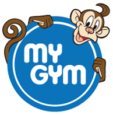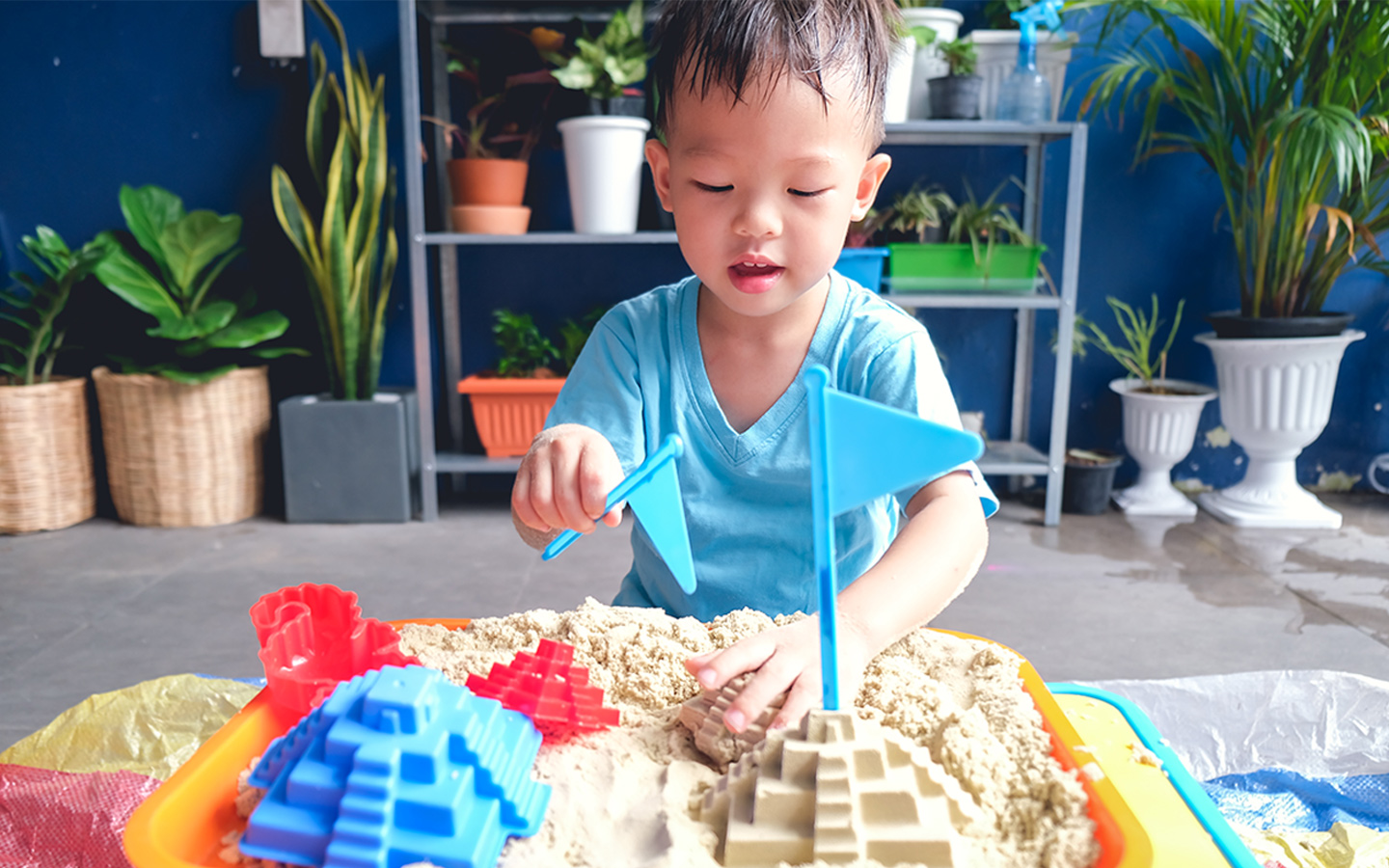Build Gross Motor Skills First, Then Focus On The Finer Ones
While it might seem like a natural process, dynamic physical movement helps infants and children develop sensory systems. Fine tuning the senses to experience everything that surrounds a growing baby. Dynamic physical movement also assists toddlers and children to effectively develop both their gross motor skills as well as fine motor skills.
Well-developed motor skills remain useful to us throughout our lives. Helping us move around easily and with agility; lift heavy objects and items; and type on a keyboard efficiently. From taking a bath to dressing up. From learning to hold a pencil and brush to writing and painting or to master a game or a musical instrument.
What are gross motor skills?

Development of gross motor skills and fine motor skills means enabling children to control their large body
muscles and movements. This involves strengthening of major muscle groups supporting the spine, arms and
legs. Then gaining control over smaller muscles of the wrists, hands, and fingers.
Strong spine, arms and legs ensure infants and growing children in crawling, pushing, pulling, rolling, walking and
sitting still. It also helps them maintain core stability and a good posture.
As children grow, gross motor skills and strong muscles enable children to perform functions like standing and walking, running and jumping, and sitting upright at the table. But this is not all, gross motor skills also help in improving the hand-eye coordination and movement of the eyeballs, required to throw, catch and kick a ball, as well as riding a bike.
Gross and fine motor skills influence all our everyday activities and functions including taking a bath, scrubbing the face and hands, changing clothes, and eating. They help children to sit upright, and assist in performing finer tasks like writing, drawing and cutting, and in being attentive.
From gross skills to finer ones

As all major muscles gain in strength and robustness, you can begin to focus on fine-tuning smaller muscles and
improving hand-eye coordination. This will enable children to bring all their physical movements under greater
control and make them smoother and more steady.
Strong fingers and wrists play a major role in helping get a better grip on what children want to hold. The ‘pincer’
grip as it is called, helps the child to hold a teacup by its ears, lifting it to her lips and putting it down without
spilling the contents. A pincer grip is among the most useful movements in our lives.
Please note: As fine motor skills activities depend on the use of smaller muscle of the hands, neglecting to build these muscles can make it difficult for a child to hold or participate in common actions such as using pencils, playing with blocks, buttoning up a shirt, cutting with a pair of scissors, using cutlery and opening lunch boxes. You shouldn’t be surprised when your baby learns to pinch you when your attention drifts.
Having said that, what you also need to understand is gaining control over large muscles precedes the development of fine motor skills and fine motor muscle control. So build the gross muscles first, then start working on fine motor muscles. Together they help acquire skills that include writing, drawing, painting and cutting.
Stability is possible only when gross and fine motor skills are supported by a strong muscle base. Which is why learning to build both gross and fine motor skills is a lifetime activity. Besides, never neglect to nourish the physical body to help build muscle and bone mass and strengthen the whole body. This is a very critical aspect, as strong muscles and bones help maintain stability and agility of the physical body throughout its lifetime.
Solid to the core

Physical movement of the human body is a complex function and requires activities that help strengthen and build targeted muscles. These become the foundation for the development of more sophisticated skills.
Another important skill for a child to acquire is to be aware and understand the nature of her physical body in space, and the relationship it has with the environment surrounding the body.
Which is why a parent needs to focus on building the strength to move and maintain a good posture; the balance required to carry out movements or to remain still…bear in mind these skills are very useful to help build a sense of confidence, self-esteem and independence.
Therefore it is important to expose the child to experiences that allow her to practice again and again on movements that develop these core skills.
Strike a balance

There are two types of balances to consider – the static and the dynamic. Both are critical and important skills. They teach a child to balance while it is in motion and when the body is at a standstill. These skills might seem obvious to an adult, but they are not to a child. Infants and children learn to distinguish between the two only through experience and constant practice.
Point to note: Always practice balancing activities on a flat floor and in bare feet. Put away all sharp objects and remember to pad the edges of furniture. Make the surroundings safe for the baby and conducive to learning.
Strengthening the feet
An infant requires her legs and feet to be strong to maintain a steady balance. Make sure all strength building activities are easy, fun and can be practiced individually.
Once your child is able to stand and move about on her own, show your child how to walk on different parts of her feet – heels, toes, both indoors and outdoors. Also practice walking along a straight line on the floor, and do this using your heels and toes and keep changing directions.
Sit down on the floor with your toes pointing straight up and then move them up and down. Make circles by rotating your ankles, anti-clockwise first and then clockwise. This movement brings flexibility and strengthens the foot.
Remember to make all these activities interesting and engaging. For instance, show your child how to pick up a rubber band or a pencil or any other object off the floor, using only the toes. This is particularly compelling and involving.
You can also think of stamping your feet on the flooring, while marching up and down with your child in tow. Avoid stamping hard on the floor. Do it gently. It helps build rhythm and maintain balance while in motion.
Standing still on one leg

Children love imitating their parents, so you can leverage this to teach your child how to stand on one leg. This activity can be made into an interesting routine when you show your child can do it on her own.
Show your child how she can stand between two chairs and lift one leg up. Show her how she can maintain her balance by holding onto the back of the chair and then letting it go. Make this exercise interesting and engaging by telling the story of how a stroke learns to balance on one foot. Make it up.
Then make your child stand between two chairs, hold onto one chair with one hand, and slowly lift her leg up, and assume the ‘stork’ position. Encourage your child to hold a still posture for a couple of seconds at a time.
During the initial stages of the “standing on one leg” exercise, alternate the legs. This will ensure that your child learns to balance steadily, on any leg. As you make progress, get your child to balance on one leg and hold the stroke position for 5 seconds at a stretch. Once she feels confident, ask your child to maintain the stroke position without using the chair.
When to start developing motor skills?

A newborn begins developing core motor skills as soon as it can start moving. Hence, you and your child can begin practicing on acquiring both gross and fine motor skills, right after birth and practice every day.
However, infants and toddlers may need extra stimulation to work on acquiring specific motor skills. Which is why it is important for both the parents to actively participate in the skills acquisition process.
A huge part of a baby’s development and learning happens through play.
Using a variety of play items with different textures, colours, sounds, and patterns is the best way to stimulate and engage a child. Look around, you are bound to find handy things you can experiment with.
More importantly, playing together, and learning together increases the quality of time that you spend with the baby. By being around longer, parents remain within the baby’s field of vision. And proximity encourages bonding and builds trust.
About My Gym
Working on developing gross and fine motor skills is among the most important tasks you and your child can indulge in. My Gym will show you how you can go about doing that through a step by step process. Give us a call or email. Participate in a trial session and get a hands-on introduction to gross and fine motor skills and tips you can follow at home. Prepare your child to face kindergarten with confidence.



